


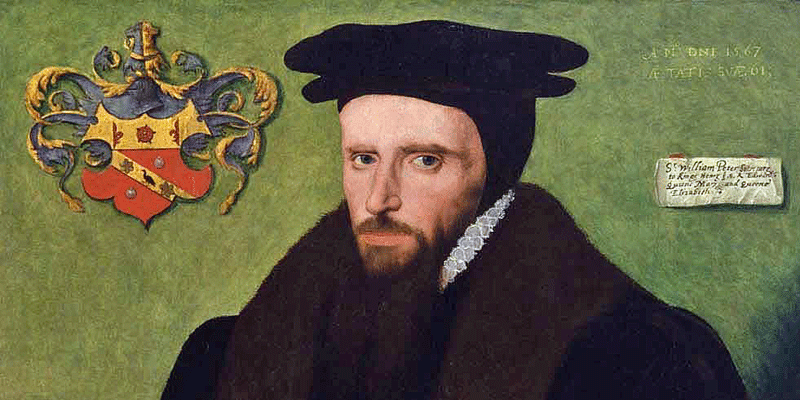
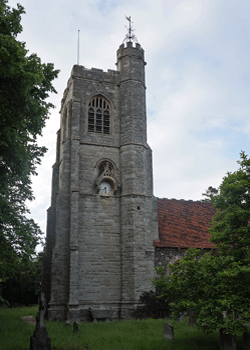 Our project to determine if the Wood households of Essex connect into one family tree began with research to find the family of William Wood, who was born 1 May 1837 in Ostend, Burnham, Essex. He is my 3rd great grandfather. In 1862 he sailed to New York, and then moved West. He lived the rest of his life in Utah and Alberta, Canada.
Our project to determine if the Wood households of Essex connect into one family tree began with research to find the family of William Wood, who was born 1 May 1837 in Ostend, Burnham, Essex. He is my 3rd great grandfather. In 1862 he sailed to New York, and then moved West. He lived the rest of his life in Utah and Alberta, Canada.
William's family in England was a Catholic, which is a research challenge. Land Records and Wills can prove relationships but are imperfect substitutes for missing birth records. 53,347 individuals on the 1841 Census had the surname Wood. The frequency of the surname is a challenge that can be managed because only 6,376 of them resided in London, and a scant 1,502 resided in Essex, implying fewer than 300 households.
Even 300 households, however, require a process of elimination to place individuals into family groups. By working together, we can prove impossible relationships and increase of our knowledge of probable ones. Please join the conversation.
Thomas Wood
 Thomas Wood (1719-1783) of Billericay was known as the Abstemious Miller. His self-indulgent eating caused obesity, and at age 44 he suffered from gout, insomnia, and rheumatism. To recover his health he adopted a vegetarian diet advocated by Luigi Cornaro, an Italian dietician. His miraculous recovery was celebrated in the "Gentleman's Magazine" and by his portrait which hangs in the Cater Museum.
Thomas Wood (1719-1783) of Billericay was known as the Abstemious Miller. His self-indulgent eating caused obesity, and at age 44 he suffered from gout, insomnia, and rheumatism. To recover his health he adopted a vegetarian diet advocated by Luigi Cornaro, an Italian dietician. His miraculous recovery was celebrated in the "Gentleman's Magazine" and by his portrait which hangs in the Cater Museum.
Joseph Wood
_and_HMS_Investigator_(1848)_in_the_ice-web.gif) Joseph Wood (1803-1855) was a Mariner and Sail Maker, described as 5'8" tall, with a fair complexion, dark eyes, and black hair. In 1850 he sailed on the HMS Enterprise (see picture) to find the missing Franklin expedition. Although the HMS Enterprise's four years at sea was marred by ice and quarrels, Joseph was praised for his skills to repair sails in arctic weather. The voyage failed to find Franklin but significantly improved maps of northern waterways.
Joseph Wood (1803-1855) was a Mariner and Sail Maker, described as 5'8" tall, with a fair complexion, dark eyes, and black hair. In 1850 he sailed on the HMS Enterprise (see picture) to find the missing Franklin expedition. Although the HMS Enterprise's four years at sea was marred by ice and quarrels, Joseph was praised for his skills to repair sails in arctic weather. The voyage failed to find Franklin but significantly improved maps of northern waterways.
Thomas Wood
-web.gif) Thomas Wood (1499-1582) was a Priest and one of the Chaplains of Queen Mary. He was imprisoned at Marshalsea (see picture) in 1560 for Papistry, remaining jailed for 20 years until age 81. Before prison, he was the Rector or Vicar in Essex at High Ongar, Walthamstow, South Weald, and Bradwell-juxta-Mare, afterwards serving as the Prebendary (Canon) of Canterbury and Westminster Abbey.
Thomas Wood (1499-1582) was a Priest and one of the Chaplains of Queen Mary. He was imprisoned at Marshalsea (see picture) in 1560 for Papistry, remaining jailed for 20 years until age 81. Before prison, he was the Rector or Vicar in Essex at High Ongar, Walthamstow, South Weald, and Bradwell-juxta-Mare, afterwards serving as the Prebendary (Canon) of Canterbury and Westminster Abbey.
Savage Warrior
 Adam le Wode of Worcestershire (1221) is believed to derive his name from the Saxon "Wode or Wod," meaning "wild" or ferocious in battle, which explains the caveman on the family crests of Wood families. Walter de la Wode of Herefordhsire appears in 1242 on the tax roles of King Henry III, which is believed to be the first spelling of Wood to mean "of the Wood" or one who resides by a Wood.
Adam le Wode of Worcestershire (1221) is believed to derive his name from the Saxon "Wode or Wod," meaning "wild" or ferocious in battle, which explains the caveman on the family crests of Wood families. Walter de la Wode of Herefordhsire appears in 1242 on the tax roles of King Henry III, which is believed to be the first spelling of Wood to mean "of the Wood" or one who resides by a Wood.
 St Giles of Mountnessing dates to the 12th century, evidenced by the quoins of Roman bricks in the angle on its NE corner.
St Giles of Mountnessing dates to the 12th century, evidenced by the quoins of Roman bricks in the angle on its NE corner.
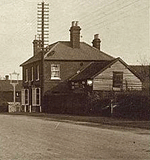 George Inn was the original name of this Pub in Mountnessing. Barnaby Wood signed a lease with the Petre family in 1786, and was its Victualler until his death in 1806.
George Inn was the original name of this Pub in Mountnessing. Barnaby Wood signed a lease with the Petre family in 1786, and was its Victualler until his death in 1806.
 St Andrews of Heybridge is near Maldon. The building design is Norman. Anciently the village was called Tidwalditune.
St Andrews of Heybridge is near Maldon. The building design is Norman. Anciently the village was called Tidwalditune.
 Sir Walter Scott mentions The Griffin of Danbury in Wavlery, his first novel. Joseph Wiffen was its Victualler between 1781 and 1786.
Sir Walter Scott mentions The Griffin of Danbury in Wavlery, his first novel. Joseph Wiffen was its Victualler between 1781 and 1786.
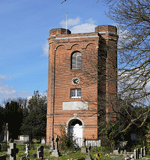 Robert Lord Petre built St Nicholas of Ingrave in 1734, when the parishes of Ingrave and West Horndon were consolidated and their medieval churches razed.
Robert Lord Petre built St Nicholas of Ingrave in 1734, when the parishes of Ingrave and West Horndon were consolidated and their medieval churches razed.
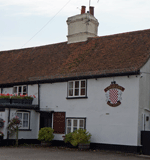 The Chequers of Roxwell was built by the Perry family prior to 1673. Thomas Wiffin was its Victualler from 1781 until his death in 1786, followed by Jane Wiffen, his his widow.
The Chequers of Roxwell was built by the Perry family prior to 1673. Thomas Wiffin was its Victualler from 1781 until his death in 1786, followed by Jane Wiffen, his his widow.
 Our project is to identify every Wood family residing in Essex before 1852, plus the families to whom they are related by marriage.
Our project is to identify every Wood family residing in Essex before 1852, plus the families to whom they are related by marriage.
We do not know what you know. Please share with us your knowledge, and help us correct any error you find in our research.